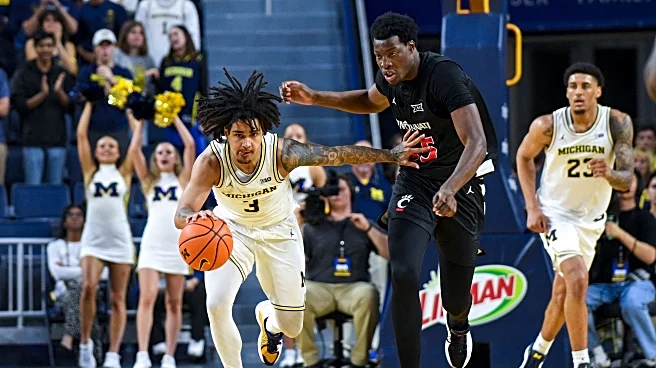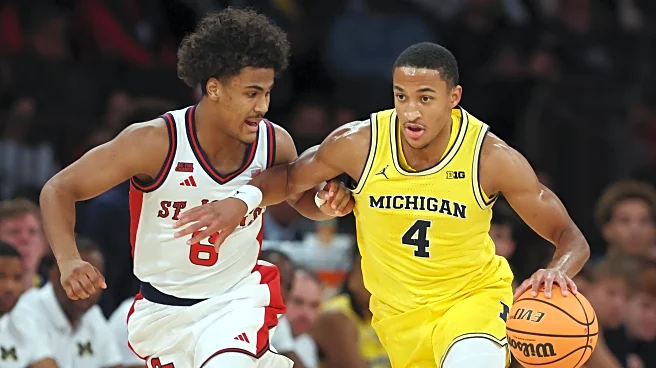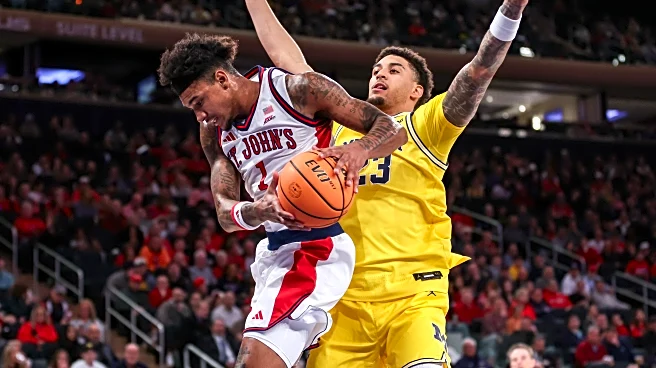The Michigan Wolverines may still be haunted by the turnover ghosts from last season, but Saturday’s exhibition victory over No. 5 St. John’s shed some light on how head coach Dusty May is attempting to flip
the script and fix those issues from a different approach.
Michigan faced a highly-talented Red Storm program that is sure to be in the conversation when March rolls around, and both programs are still learning a ton about themselves. On Saturday at Madison Square Garden, both teams were able to work out the early-season kinks to get ready for the regular season.
One of the biggest questions coming into the season for the Wolverines was surrounding the turnover issues that bugged the program from start to finish in 2024-25. For a team that averaged 14 turnovers per game last season and surrendered 15.2 points per game off turnovers, it did not look much better against Cincinnati and St. John’s in each of the Wolverines exhibitions. They turned it over 19 and 22 times, respectively, in those games, and while it was a small sample size, May was “not confident” the turnover issues would dissipate with time. However, he did signal they were doing more as a team to limit the damage.
When looking at the numbers closer, Michigan’s 22 turnovers against St. John’s amounted to just 22 points, with four of those being fast-break points. It was a stat May called an “anomaly,” seeing it as a positive in his team’s ability to get back on defense.
“The crazy thing about our turnovers is just that it is similar to last year,” May told the media Monday. “A lot of our passes lead to dunks or layups, and a lot of our turnovers lead to our set defense. For us to turn it over 22 times and we gave up four points in transition, we have some real statistical anomalies going on. Fortunately, when we do drop the ball, it goes out of bounds instead of to the other team.”
Part of why Michigan was able to limit the damage so efficiently was its ability to rebound, not just with its 7-footers but also from guards Elliot Cadeau and Nimari Burnett. They used the centers’ block-outs as opportunities to squeeze inside and get a few boards. In turn, the forwards were able to get behind the St. John’s defenders, creating longer outlet passes by “skipping a step” and leading to 22 points on fast-break chances.
“I said it last week that if Elliot can become an elite defensive rebounder, then we’re gonna be an elite transition team because he has some real gifts in that area and (an) ability to make his teammates better,” May said. “I was very happy with how we were able to convert 3-on-2 breaks and 4-on-3 breaks, and we discovered something about ourselves as far as our big wings running against guards, and then the 5s playing off of them.
“If (the guards) go get the ball, we’ve skipped a step, which is the outlet. And there’s incentive to run, there’s a lot of incentive to run because our guards want to pitch the ball ahead.”
The Wolverines exploited those mismatches repeatedly, creating easy layups and open three-point shots before the Red Storm could recover. At one point, Yaxel Lendeborg scored six buckets in seven minutes to keep the Wolverines tied as the Red Storm attempted to pull away late in the second half due to the quick play of the transition offense. It’s the kind of dynamic, opportunistic play that could define Michigan’s ceiling this season.
“In real time, we were able to discover an advantage and go to it three or four times,” May said. “I think we can leverage that for more open threes if we really buy into it.”
May has stressed all offseason that in order for his team to succeed, it needs to play quickly and have 80 or more possessions per game, while taking advantage of its size and consistent shooting. With such high expectations to start the season, taking care of the ball and capitalizing on fast-break chances could elevate the team to greater heights than last season.













